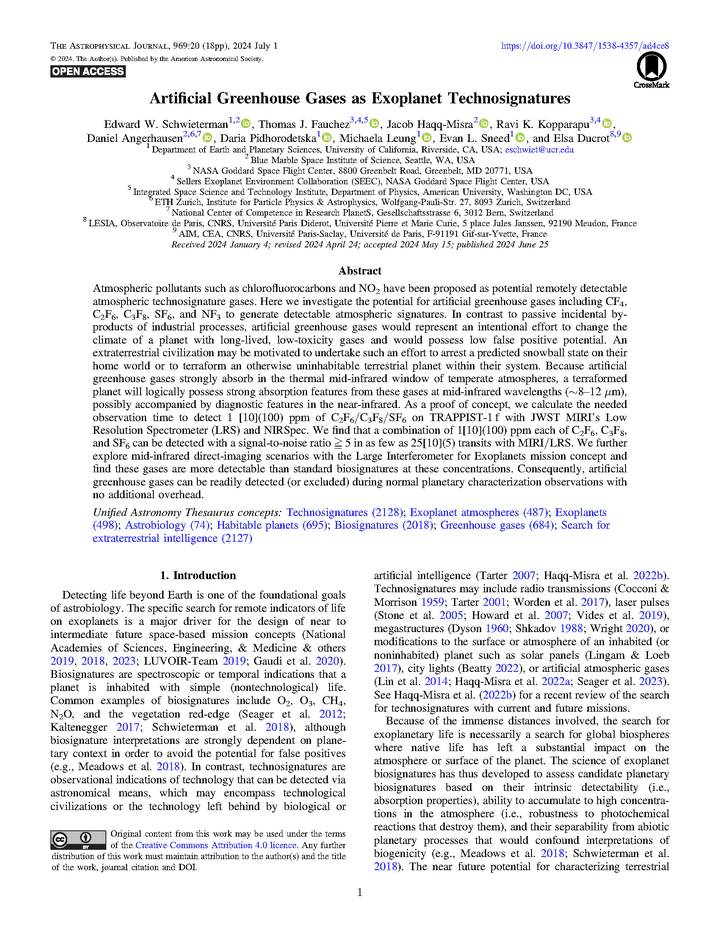Artificial Greenhouse Gases as Exoplanet Technosignatures

Abstract
Atmospheric pollutants such as chlorofluorocarbons and NO₂ have been proposed as potential remotely detectable atmospheric technosignature gases. Here we investigate the potential for artificial greenhouse gases including CF₄, C₂F₆, C₃F₈, SF₆, and NF₃ to generate detectable atmospheric signatures. In contrast to passive incidental by-products of industrial processes, artificial greenhouse gases would represent an intentional effort to change the climate of a planet with long-lived, low-toxicity gases and would possess low false positive potential. An extraterrestrial civilization may be motivated to undertake such an effort to arrest a predicted snowball state on their home world or to terraform an otherwise uninhabitable terrestrial planet within their system. Because artificial greenhouse gases strongly absorb in the thermal mid-infrared window of temperate atmospheres, a terraformed planet will logically possess strong absorption features from these gases at mid-infrared wavelengths (∼8–12 μm), possibly accompanied by diagnostic features in the near-infrared. As a proof of concept, we calculate the needed observation time to detect 1 [10] (100) ppm of C₂F₆/C₃F₈/SF₆ on TRAPPIST-1 f with JWST MIRI’s Low Resolution Spectrometer (LRS) and NIRSpec. We find that a combination of 1 [10] (100) ppm each of C₂F₆, C₃F₈, and SF₆ can be detected with a signal-to-noise ratio ≧ 5 in as few as 25 [10] (5) transits with MIRI/LRS. We further explore mid-infrared direct-imaging scenarios with the Large Interferometer for Exoplanets mission concept and find these gases are more detectable than standard biosignatures at these concentrations. Consequently, artificial greenhouse gases can be readily detected (or excluded) during normal planetary characterization observations with no additional overhead.